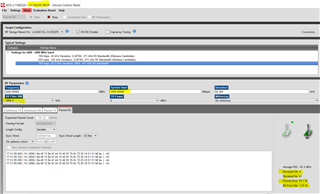Other Parts Discussed in Thread: CC1352R, SYSCONFIG
Hi TI,
We are looking at TI modules with various RF interfaces which gives a high throughput/Data rate for our application.
Based on https://github.com/TexasInstruments/ble_examples/blob/simplelink_cc13x2_26x2_sdk-5.10/examples/rtos/CC26X2R1_LAUNCHXL/ble5apps/throughput_peripheral/readme.md, We thought of choosing module CC2652R1 for achieving good throughput.
And then, we saw, TI is providing Proprietary RF mode, where user will have advantage of choosing various frequency bands, PHY and can avoid packet overhead concept of standard RF protocols. With all these custom settings, we wanted to evaluate => Do we achieve higher throughput with Proprietary RF mode comparing to BLE that mentioned in above link.
We are checking module CC1352P, because CC1352P radio can support a wide range of physical radio formats ( 169, 433, 470 to 510, 868, 902 to 928, and 2400 to 2480 MHz - as per datasheet )
We are using example rfPacketTx from simplelink_cc13xx_cc26xx_sdk_6_40_00_13 SDK as shown below.
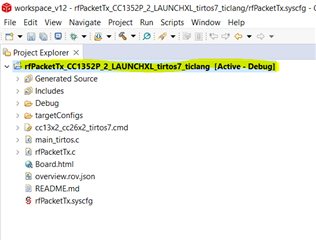
When we try to do some custom settings, seeing that 169 MHz and 433 MHz bands are not supported but as per datasheet, these bands (169 MHz and 433 MHz) are supported by CC1352P.
I am wondering where my understanding is wrong ?
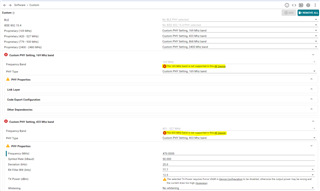
868 MHz band is supported but can't set the symbol rate more than 1Mbps. Is it that we can't achieve more than 1Mbps with 868MHz band ?
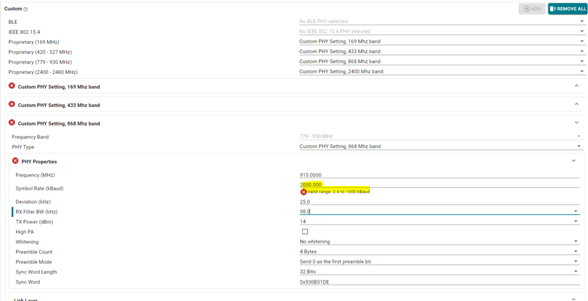
With 2400 MHz band, I see maximum symbol rate ~250Kbps.
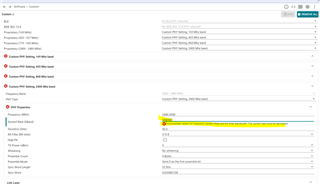
We thought of exploring this proprietary RF mode, to see =>
Is RF proprietary mode achieves more throughput than BLE module (BLE-5 stack of CC2652R1 => ~1300 Kbps with less processing involved)
But I see proprietary RF mode is more suitable for high security applications than high throughput applications.
Please correct me if I am wrong and we are open for the suggestions ?
Thanks,
Padmini


